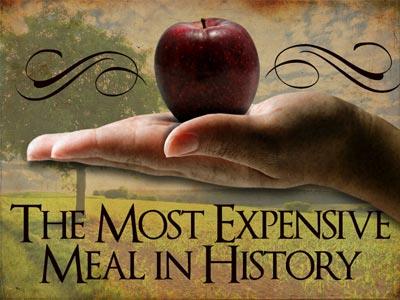-
The Book Of The Generations Of Adam. Series
Contributed by John Lowe on Oct 12, 2018 (message contributor)
Summary: In one sense, chapter 5 is one of the most discouraging and despondent chapters in the Bible. The reason is that it is like walking through a cemetery.
October 15, 2013
Commentary on the Book of Genesis
By: Tom Lowe
Lesson I.C.5: The Book of the Generations of Adam. (Genesis 5.1-32)
Introduction
In the first section of the book of Genesis (chapters 1-11), we have world events—first the creation, then the fall, and now the flood in chapters 5-9. In chapter 5 we have the book of the generations of Adam through Seth. We have read about Cain’s line and now it is dropped. It will be mentioned again only as it crosses the godly line. This is a pattern that will be set in the book of Genesis.
In one sense, chapter 5 is one of the most discouraging and despondent chapters in the Bible. The reason is that it is like walking through a cemetery. God said to Adam, “…for in the day that thou eatest thereof thou shalt surely die” (Gen. 2.17), and they all died, because they were all sons and daughters of Adam. Paul says, “For as in Adam all die… (1 Cor. 15.22).
Commentary
1 This is the book of the generations of Adam. In the day that God created man, in the likeness of God made he him;
2 Male and female created he them; and blessed them, and called their name Adam, in the day when they were created.
“And blessed them, and called their name Adam”—not the Adamses, but Adam. He called their name Adam—Eve is the other half of Adam.
“The book of the generations of Adam” is a strange expression and it occurs only here and in the beginning of the New Testament, and there it is “the book of the generations of Jesus Christ.” There are these two books and there are these two lines, two seeds, and they are against each other. The struggle is going to be long and it is going to be between the line of Satan and the line of Christ. The line which we are following now is the line through Seth, and it is through this line that Christ will ultimately come.
Genesis 5 is the first genealogy in Scripture and introduces “the book of the generations of Adam” (v. 1). Ten generations are listed here, from Adam to Noah, just as ten generations are listed from Shem to Abraham in “the generations of Shem” (Gen. 11.10-26). Eight times in Genesis 5 you find the melancholy phrase “and he died,” because death was now reigning over mankind because of Adam’s sin (Rom. 5.12-17, 21). Sin and death still reign today, but through Jesus Christ we can “reign in life”—“For if by one man's offence death reigned by one; much more they which receive abundance of grace and of the gift of righteousness shall reign in life by one, Jesus Christ… That as sin hath reigned unto death, even so might grace reign through righteousness unto eternal life by Jesus Christ our Lord” (Rom. 5. 17, 21).
This chapter is the only authentic history of the first age of the world from the creation to the Flood, in existence, and it contains according to the Hebrew text 1656 years. It is not one of those which the apostle Paul calls “endless genealogies”—“Neither give heed to fables and ENDLESS GENEALOGIES, which minister questions, rather than godly edifying which is in faith…” (1 Tim. 1.4). Christ who was the end of the Old Testament Law, was also the end of the Old Testament genealogies: they looked forward to Him and their religion was centered in Him. The genealogy recorded here is inserted briefly in the pedigree of our Savior given in Luke 3, and it shows that Christ was the seed of the woman that was promised; and there is the additional purpose of linking the history of the early people to the story of Noah, and of showing the result of sin. In fact it answers a problem raised in the previous section. If in spite of sin there is progress, civilization and prosperity, what about the curse? The answer is that despite people’s aspirations, they die!
I have read the Bible through several times, but I have to admit that I have skipped over the genealogies some of those times, but let us remember that they are important, if for no other reason than God has placed them in his book—All Scripture being given by inspiration of God, is profitable, though some is more profitable than others.
3 And Adam lived an hundred and thirty years, and begat a son in his own likeness, after his image; and called his name Seth:
When Adam was 130 years old, how old was he? In other words, when God created Adam, did He create him thirty years old, or sixteen, or fifty? Now here is something we could debate for days. The truth is, I don’t know—anything would be speculation. And if He created him that old, was he that old? What did I say! May I say to you that this answers a lot of questions about how old the earth is? When someone says there are rocks that are billions of years old, they just do not know. Maybe when God created them, He created them two or three billion years old. The important thing here is that when Adam had been here 130 years, he “begat a son in his own likeness.” Adam was made in the image of God, but his son was born in his likeness—this is something very important.

 Sermon Central
Sermon Central



